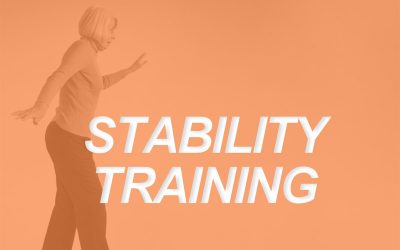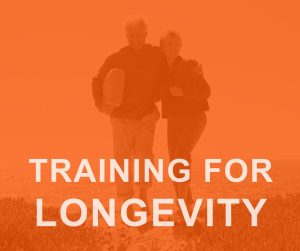Perhaps the most daunting aspect of starting your career as a Personal Trainer is recruiting clients. Whether you are working in a big box health club, a personal training facility, or venturing out on your own, one of the important aspects of the job is getting...
Andrew Gavigan
Supporting Senior Clients: Cultivating a Sense of Belonging
As fitness professionals, supporting senior clients with the skills and tools at our disposal is an important obligation. It is vital that we help our senior clients exercise safely and also offer a number of ways to provide them with nutritional guidance in order to...
How Fit Pros Can Leverage Commitment Devices to Promote Healthy Behaviors
Committing to a healthy lifestyle delivers its obvious benefits that most won't argue with, yet most of our fitness clients wrestle with this commitment daily. Exercising and eating well generally result in many positive health outcomes and measures; the more we stick...
Benefits of Plank: Emerging Research on Strength and Immune Function
Recent research has shown there to be even more benefits of plank exercise programming for fitness clients. Further research has also shown a variety of similarities and differences in using variations of plank, multiple platforms, and variable equipment to increase...
The Plank: Quality Over Quantity
The plank is one of our most trusted tools in personal training for conditioning the muscles of the core. You can find multiple articles about its effectiveness within the NFPT blog. NFPT recommends using a variety of core exercises including “dynamic moves, (balance)...
How Fitness Clients Misjudge Future Gym Commitment
Whenever we are approached by a new client, the level of motivation they have for committing to exercise is likely quite high--at that moment. But, as many trainers will discover, motivation and interest in fitness clients' goals are likely to wax and wane, depending...
Stability Training: Load vs Platform
Balance and stability can be considered the foundations of fitness. Our best programs consist of proper progressions, from a long-term design perspective, and for each individual session. Stable foundation and core control, movement patterns and mobility, strength,...
Book Review, “Exercised”: Why Something We Never Evolved to Do is Healthy and Rewarding
If exercising is so good for us, then why is it so hard to get people to workout? We experience hunger, and feel satisfaction after we eat. We feel thirst, and quench it with water. But how do we make exercise as simple and natural as eating a sandwich? If I knew the...
Fitness World Records
Great workout programming usually consists of a fair amount of foundational strength and mobility practices mixed with a bit of challenging exercise. For clients who are training for a sport or an event, there might be some more effortful conditioning. But, like in...
Using the Five “Whys” to Identify Personal Training Client Wants and Needs While Goal-Setting
When we first meet with a client, it is standard practice of effective personal trainers to have goal-setting exploratory discussions; you can't know where to lead your client if you have no idea where they want to go. But goals are like feelings: unless people have a...
Mistakes Personal Trainers Make: The Fit Pros Tell All
Studying, getting certified, and obtaining continuing education credits (CECs) are all part of being a successful personal trainer. But some things can only be learned from experience...i.e., mistakes. With the help of long-time Fit Pros and NFPT staff writers Dr....
Planks or Crunches: Which is Better?
A strong core is the foundation of proper movement patterns, injury prevention, and athletic prowess yet deciding which exercises to program for which client may pose a challenge. Per usual, I’m an advocate of using any training tools, programs, exercises, and...
How Ready is a Potential Client to Change? A Look at the Transtheoretical Model
Knowing how ready to change a potential client who walks through your club doors is can save personal trainers time and energy, and also help guide new clients in an effective manner. Sometimes, as fitness professionals, the best we can do to motivate the people in...
Risk vs. Reward: Reduce Risk of Injury Without Reducing Results
As personal trainers and fitness instructors we manage risk all day. Designing workouts that deliver results, while keeping clients safe. Leading classes while managing different fitness levels. Every workout, no matter how short, heavy, long, or light, comes with...
Loss Aversion: One of the Biggest Hurdles That Fit Pros and Their Clients Face
The concept of loss aversion may not be a familiar one to everyone in the fitness world but it can certainly be applied across many disciplines, especially health and fitness. According to Mark Twain “The secret to getting ahead is getting started”..or maybe it was...
Training for Longevity
Of the many varied, personal, functional, and subjective goals that our personal training clients strive for, we generally hear “strength”, “fat loss”, or “performance”. But of equal importance to our community and practice is “longevity”. With our aging population...
The Way We Eat: Nutritional Considerations
There are a number of aspects of food and the food industry as a whole that affect our health. This article will be the last of a three-part series where we briefly examined the economic impacts of food, the environmental variables, then finally, here, the nutritional...
On a Roll: More Uses for the Foam Roller
Most of us view foam rollers as tools for SMR and recovery. But applications of the foam roller do not stop there. Foam Rollers Have Many Uses Foam rolling and Self Myofascial Release (SMFR or SMR) have become a staple practice for athletes, trainers, coaches, and...




